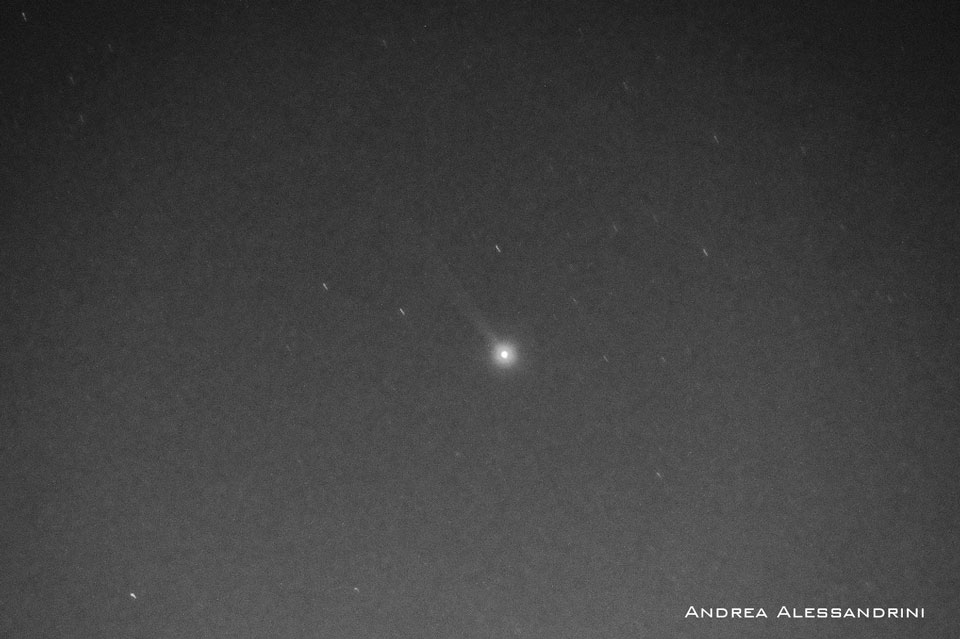2020年7月8日
Mercury’s Sodium Tail
Image Credit & Copyright: Andrea Alessandrini
Explanation: What is that fuzzy streak extending from Mercury? Long exposures of our Solar System’s innermost planet may reveal something unexpected: a tail. Mercury’s thin atmosphere contains small amounts of sodium that glow when excited by light from the Sun. Sunlight also liberates these molecules from Mercury’s surface and pushes them away. The yellow glow from sodium, in particular, is relatively bright. Pictured, Mercury and its sodium tail are visible in a deep image taken in late May from Italy through a filter that primarily transmits yellow light emitted by sodium. First predicted in the 1980s, Mercury’s tail was first discovered in 2001. Many tail details were revealed in multiple observations by NASA’s robotic MESSENGER spacecraft that orbited Mercury between 2011 and 2015. Tails are usually associated with comets. The tails of Comet NEOWISE are currently visible with the unaided eye in the morning sky.
Comet NEOWISE from Around the Globe: Notable Images Submitted to APOD
Tomorrow’s picture: open space
水星的钠尾
图像提供与版权:Andrea Alessandrini
说明:从水星伸出的弥漫条纹是什么?对我们太阳系最内围的行星进行的长曝光观测,发现了一个出乎意料的景观:它长尾巴!阳光会把各种分子,从水星的表面蒸发出来并推送出去。所形成的水星稀薄大气含有少量的钠,并在阳光的激发下发出相对明亮的泛黄辉光。上面这幅今年5月底在意大利,透过纳黄光滤镜拍摄的深空影像,水星和它的钠尾清楚可辨。远在1980年代即预言存在的水星钠尾,其实直到2001年才首次观测到。美国航天总署信使号太空船在2011年到2015年绕行水星时进行的多次观测,进一步解析出钠尾的许多细节。说到尾部结构,常会让我们联想起彗星,而在目前的夜晚里,用双筒望远镜可见到NEOWISE彗星的彗尾。
来自世界各地的NEOWISE彗星:提交给APOD的值得注意的图片
明日的图片:open space



